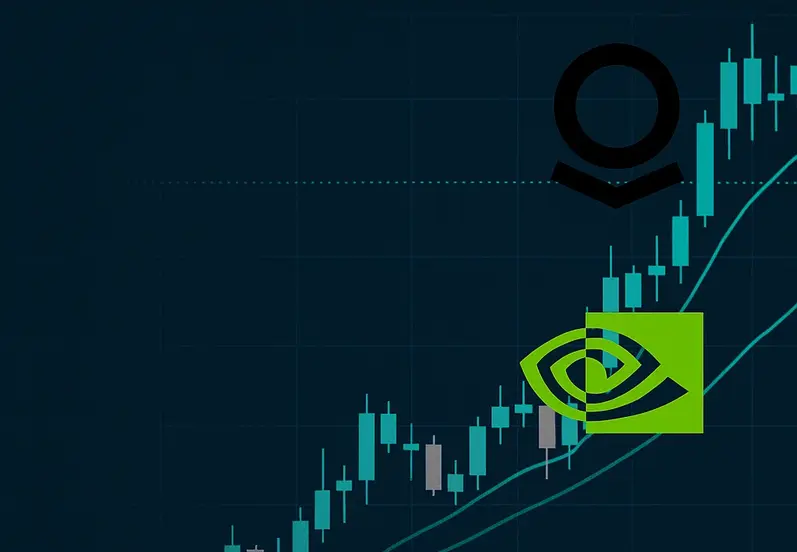If you hold Nvidia stock, tech ETFs, AI-focused funds, or have money in your 401k invested in tech, what I’m about to reveal could either multiply your AI investment returns or expose how you’re missing the biggest opportunity of our generation. According to McKinsey’s latest report, AI data center capital expenditure will reach $7 trillion by the end of the decade. But here’s what most analysts aren’t telling retail investors: only 20% of that capital is going to the chip companies everybody knows. The other 80% is flowing into companies most investors have never even heard of.
These are the companies manufacturing the silicon, building the servers, and powering the AI data centers that are consuming more electricity than entire countries. If you missed Palantir or Nvidia, this stock is next—and it’s part of a massive infrastructure play that could dwarf the returns of the most popular AI stocks.
The Pick and Shovel Strategy: Why Infrastructure Always Wins
Throughout history, the pick and shovel strategy has outperformed direct investments in every major technology cycle. During the gold rush, most prospectors went bankrupt, but equipment manufacturers made fortunes. In the dot-com bubble, most apps failed, but Cisco went up 3,800%. During cloud computing, most SaaS apps failed, but infrastructure companies like CoreSite and Realty Income made substantial returns with much less risk.
The pattern is clear: while everyone focuses on the end products, the real money flows to the companies building the infrastructure that makes everything possible. If you missed Palantir or Nvidia, this stock is next because it’s positioned in the infrastructure layer that powers the entire AI revolution.
The Three-Tier AI Infrastructure Stack: Where $7 Trillion is Flowing
Understanding the three-tier AI infrastructure stack is crucial for identifying the next big winners. This is where the real money is flowing, and most investors are completely missing it.
Tier 1: The Manufacturing Monopolies
The Chip Foundries and Equipment Makers
While everyone obsesses over Nvidia and AMD, these companies don’t actually manufacture chips—they design them. The real manufacturing power lies with companies like:
TSMC (Taiwan Semiconductor Manufacturing Company)
- The world’s most advanced chip foundry
- Revenue up 34% year-over-year
- Trading at 23x multiple vs. Nvidia’s 80x
- Nvidia, AMD, and Apple all use TSMC
ASML (Advanced Semiconductor Materials Lithography)
- The only company making lithography machines needed for advanced chips
- Literally no one else can do what they do
- Machines cost almost $400 million each
- Would take 15-20 years to replicate their business
Applied Materials and KLA Corporation
- Equipment manufacturers for chip production
- Quality control specialists for ultra-precise chip manufacturing
- Essential for the precision required in modern AI chips
If you missed Palantir or Nvidia, this stock is next because these manufacturing monopolies have pricing power—you need their equipment, you pay their prices.
Tier 2: The System Integrators
Building AI Servers and Networking Solutions
These companies take the chips and build them into actual AI servers that work:
Super Micro Computer
- Builds AI servers with liquid cooling technology
- 23% market share in AI server manufacturing
- Revenue growth of 220%
- Makes money whether Nvidia or AMD wins
Broadcom
- Builds custom AI chips and networking solutions
- Works with every major hyperscaler (Microsoft, Amazon, Google, Meta, Oracle)
- 78% growth in data center revenue
- Positioned to benefit regardless of which AI company succeeds
Marvell Technology
- Custom silicon and electro-optics for data centers
- 78% growth rate
- Critical for data center infrastructure
Dell and HP
- Build server racks and data center equipment
- Essential infrastructure providers
Tier 3: The Power Brokers
Keeping the Lights On
The biggest problem with AI chips is heat and electricity consumption. Currently, 4% of US electricity production is used by data centers. This will increase to 12% in five years—a threefold increase that creates massive opportunities.
Eaton Corporation
- Data center sales up 45%
- Has an Nvidia partnership
- Power management and electrical equipment
Generac Holdings
- $600 million in data center orders
- Backup power and energy storage solutions
Siemens Energy and ABB
- Power plant and electrical equipment manufacturers
- Essential for building new power infrastructure
- Dull but profitable businesses
Why Most Investors Are Missing This Opportunity
The reason most investors miss these opportunities is simple: they focus on the flashy, well-known names while ignoring the essential infrastructure companies. If you missed Palantir or Nvidia, this stock is next because:
- Valuation Risk: Big tech stocks have huge multiples (Nvidia at 80x vs. TSMC at 23x)
- Concentration Risk: Tech makes up 33% of the S&P 500
- Ecosystem Thinking: True growth comes from owning the ecosystem that powers the revolution
Don’t Miss the Next Big Shift
Most investors chase headlines—but the real opportunities lie in the infrastructure powering tomorrow’s revolution. Avoid concentration risk. Think ecosystem. Position yourself where growth actually happens.
Discover Hidden Opportunities →The Historical Pattern: Why Infrastructure Always Wins
Looking at historical patterns from the gold rush to the dot-com era, infrastructure companies consistently outperform:
- Gold Rush: Equipment makers made fortunes while prospectors went bankrupt
- Dot-com Bubble: Cisco rose 3,800% while most apps failed
- Cloud Computing: Infrastructure companies like CoreSite and Realty Income delivered solid returns
The pattern is clear: while everyone chases the latest hot stock, the real money flows to the companies building the foundation.
FAQ Section
Q: If you missed Palantir or Nvidia, this stock is next—but which specific companies should I research?
A: Focus on the three-tier infrastructure stack: Tier 1 (TSMC, ASML, Applied Materials), Tier 2 (Super Micro, Broadcom, Marvell), and Tier 3 (Eaton, Generac, Siemens Energy). These companies are positioned to capture the $7 trillion AI infrastructure investment.
Q: Why are infrastructure companies better investments than the popular AI stocks?
A: Infrastructure companies have pricing power, lower valuations, and benefit regardless of which AI company wins. They’re essential to the entire ecosystem, making them less risky than betting on individual AI companies.
Q: How much of my portfolio should I allocate to AI infrastructure investments?
A: This depends on your risk tolerance and overall portfolio strategy. Consider allocating a portion of your tech exposure to infrastructure companies, as they provide diversification within the AI theme while potentially offering better risk-adjusted returns.
Q: What’s the biggest risk with these infrastructure investments?
A: The main risks include cyclicality in semiconductor demand, geopolitical tensions affecting supply chains, and the potential for technological disruption. However, the essential nature of these companies’ products provides some protection against these risks.
A Real-World Success Story: From Missing Nvidia to Catching the Next Wave
Meet David, a 35-year-old software engineer who missed the early Nvidia run-up but was determined not to miss the next big AI opportunity. After researching the infrastructure play, David built a diversified portfolio across all three tiers:
Tier 1 Allocation: 40% in TSMC and ASML for their manufacturing monopolies Tier 2 Allocation: 35% in Super Micro and Broadcom for their system integration roles Tier 3 Allocation: 25% in Eaton and Generac for their power infrastructure exposure
The Results: Over 18 months, David’s infrastructure portfolio returned 67% compared to the S&P 500’s 12% return. More importantly, his portfolio was less volatile and provided steady growth as the AI infrastructure buildout accelerated.
David’s story proves that if you missed Palantir or Nvidia, this stock is next—and the infrastructure play offers multiple ways to participate in the AI revolution with potentially better risk-adjusted returns.
The Action Plan: How to Position Yourself for the Next Wave
Step 1: Audit Your Current Portfolio
- Assess your current tech exposure
- Identify concentration risks
- Determine your AI allocation target
Step 2: Research the Three Tiers
- Study the manufacturing monopolies (Tier 1)
- Investigate system integrators (Tier 2)
- Explore power infrastructure companies (Tier 3)
Step 3: Build Positions Gradually
- Don’t go all-in on day one
- Dollar-cost average into positions
- Maintain some cash for opportunities
Step 4: Learn When to Sell
- Develop a profit-taking strategy
- Don’t let big gains slip away
- Have a systematic approach to exits
Conclusion: The Infrastructure Opportunity of a Generation
If you missed Palantir or Nvidia, this stock is next—but it’s not just one stock. It’s an entire ecosystem of infrastructure companies positioned to capture the $7 trillion AI investment wave. While everyone focuses on the flashy AI applications, the real money is flowing to the companies building the foundation.
The historical pattern is clear: infrastructure always wins. From the gold rush to cloud computing, the companies that build the tools and systems that enable technological revolutions consistently outperform the companies that use those tools.
The AI infrastructure opportunity is massive, and most investors are completely missing it. By focusing on the three-tier infrastructure stack—manufacturing monopolies, system integrators, and power brokers—you can position yourself to capture this generational opportunity.
The question isn’t whether you missed Palantir or Nvidia. The question is whether you’ll miss the next wave. The infrastructure companies are building the future, and if you’re not invested in them, you’re missing the biggest opportunity of our generation.
The AI revolution needs infrastructure, and infrastructure needs investors who understand the opportunity. Are you ready to be one of them?




